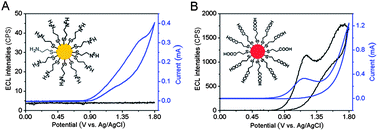Anodic electrogenerated chemiluminescence of quantum dots: size and stabilizer matter†
Abstract
The

* Corresponding authors
a
Key Laboratory of Microsystems and Microstructures Manufacturing, Ministry of Education, Harbin Institute of Technology, Harbin 150080, China
E-mail:
shaoqinliu@hit.edu.cn, wangzl@hit.edu.cn
Fax: +86 451 86403483
Tel: +86 451 86403493
b School of Life Science and Technology, Harbin Institute of Technology, Harbin, China
The

 Please wait while we load your content...
Something went wrong. Try again?
Please wait while we load your content...
Something went wrong. Try again?
T. Hu, T. Li, L. Yuan, S. Liu and Z. Wang, Nanoscale, 2012, 4, 5447 DOI: 10.1039/C2NR31324C
To request permission to reproduce material from this article, please go to the Copyright Clearance Center request page.
If you are an author contributing to an RSC publication, you do not need to request permission provided correct acknowledgement is given.
If you are the author of this article, you do not need to request permission to reproduce figures and diagrams provided correct acknowledgement is given. If you want to reproduce the whole article in a third-party publication (excluding your thesis/dissertation for which permission is not required) please go to the Copyright Clearance Center request page.
Read more about how to correctly acknowledge RSC content.
 Fetching data from CrossRef.
Fetching data from CrossRef.
This may take some time to load.
Loading related content
